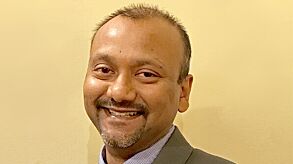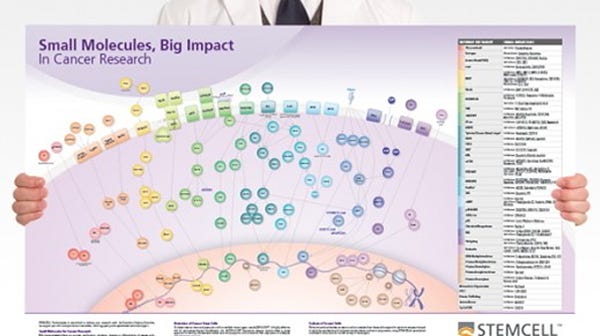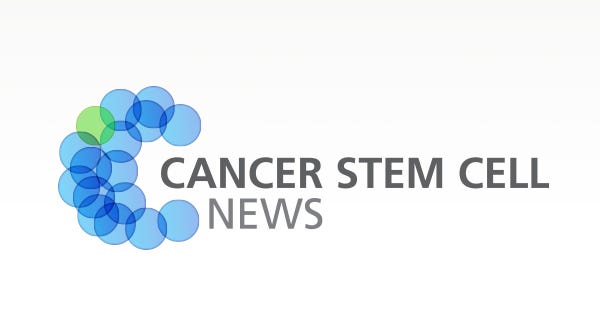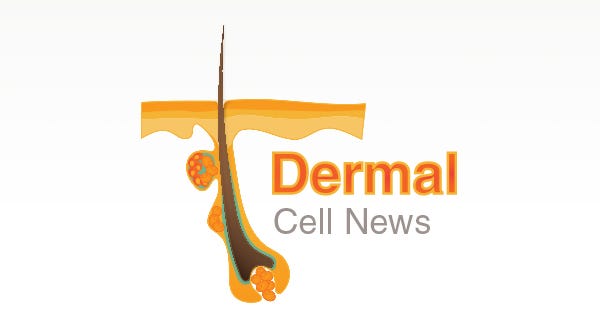Dr. Dipanjan Basu discusses his research on the molecular mechanisms underlying tumorigenesis in neurocutaneous melanocytosis
Developing a Chemotherapy for a Rare but Fatal Pediatric Disease

Dr. Dipanjan Basu is a research instructor in the laboratory of Dr. Miguel Reyes Múgica in the Department of Pathology at the University of Pittsburgh. In 2018, he shared with us a scientific discovery that inspired his own research and received a travel award to attend a conference of his choice. He chose to attend the 2018 Rare Disease and Orphan Products Breakthrough Summit.
The discovery of a "leukemic stem cell" in the late 1990s by Dick and Bonnet has shaped the future of cancer stem cell research for the decades that followed. Today, the paradigm has shifted to include the cancer stem cell model along with the stochastic model of tumorigenesis and origin of cancer. I am tremendously inspired by this original discovery and took up cancer stem cells as my area of research.
Dr. Dipanjan Basu, University of Pittsburgh
Science moves forward when you share it with the world, so we asked Dr. Basu to share some information on his own research and on his experience at 2018 Rare Disease and Orphan Products Breakthrough Summit.
The Research: Investigating the Molecular Mechanism of Neurocutaneous Melanocytosis
Can you tell us about your research?
My research is on the molecular mechanisms underlying tumorigenesis in the pediatric giant congenital melanocytic nevus and associated neurocutaneous melanocytosis (NCM), a rare pediatric disease. We have been working to investigate the molecular nature of this neoplasm so that a specific gene/gene network/pathway can be targeted.
Could you tell us more about NCM?
NCM manifests in the form of benign (but sometimes aggressive) pigmented tumors in the brain as well as giant pigmented lesions on the skin at birth or shortly thereafter. NCM almost always manifests with large or giant congenital melanocytic nevi (L/GCMN). It is a very rare disease with a rate of occurrence 1 in 200,000 births.
Symptoms of NCM typically include hydrocephalus, seizures, nausea, vomiting, but may also include visual disorders, movement and learning disorders, paralysis, intellectual deficit, developmental delay, etc.
NCM is a fatal neoplasm when symptomatic. Almost all patients die within 3 years of diagnosis. L/GCMN in itself poses a risk of malignant transformation into melanoma or other neoplasms of the melanocytic lineage. Although rare, malignancy from L/GCMN is almost always fatal.
There is currently an unmet need for a specific therapy targeted towards NCM. Up until now, conventional treatments include radiation, surgery, and chemotherapy. None of these treatments have been known to prolong survival of NCM patients.
What have you found so far?
Recently, we and others have identified and isolated stem-like cells with clonogenic growth potential from patient’s lesions. These cells express specific markers of the melanocytic progenitors and neural crest, divide clonogenically over passages in culture, and have the ability to seed new tumors in immune-compromised mice.
1,2 We believe it is these clonogenic cells that serve as the reservoir of all other cells in the tumor and, hence, targeting such cells could be a therapeutic strategy.
We have uncovered a plasticity of cellular signaling in these cells that have redundancy in oncogenic NRAS signaling. Targeting MEK, PI3K, and mToR induced autophagic cell death in these cells. This is a significantly different approach that may work specifically in NCM patients. We have tested a potential drug, Omipalisib, with positive results in vitro.
3
What are you hoping to achieve with your research?
My ultimate goal is to develop a chemotherapy specific for NCM. For this, we need to secure funding to create an animal model for NCM, and begin testing our in vitro finding in an animal model. We have already won the Cyagen Animal Model Award (CAMA) 2017, which was a good first step.
Clinical trials for NCM can be difficult since patients are rare and are mostly children. A better strategy is to re-purpose drugs that are already in clinical use, or have been approved for another disease and have passed the safety and tolerability criteria.
The conference: Rare Disease and Orphan Products Breakthrough Summit, Washington, DC, United States
Why did you choose to attend the Rare Disease and Orphan Products Breakthrough Summit 2018?
This summit, organized by the National Organization for Rare Disorders (NORD), is a forum that brings together researchers, policy makers, the NIH, the FDA, pharmaceutical companies, and patient advocacy groups from around the world for almost 700 rare diseases. I chose to attend this 2018 NORD summit to connect with these representatives and to promote our lab’s research. Spreading awareness about our lab’s rare disease research may win us valuable collaborations with others. We were also seeking insights on how better to approach the funding opportunities available to rare disease researchers.
Can you tell us about your favorite presentations at the conference?
One of my favorites was the keynote address by Dr. Rachel Sherman highlighting the importance of the summit in bringing people from different backgrounds together to share their story on their rare disease of interest and the importance of networking. Often rare disease researchers find themselves alone. She highlighted the motto of the conference, “Alone we are rare, but together we are strong.”
The breakout session on “What’s next for the rare cancer community?” was very helpful. This panel discussion included Karlyne Reilly (Director,
Rare Tumors Initiative, NCI) along with John Hopper (co-chair of the board of directors of NORD Rare Cancer Coalition and also President, Fibrolamellar Cancer foundation). The panel also included representatives from Incyte Corporation and the Rare Tumors Initiative within the Center for Cancer Research at the NCI. The panel was very informative for young researchers like me, as it provided information on funding support and resources for rare disease researchers across industry, government, and academia. This panel discussion has left me with something to ponder on: since my research involves a rare tumor, joining the NCI Rare Tumors Initiative would be a positive decision that can benefit our lab and the rare tumor community through data sharing and funding support.
I also enjoyed the “lunch and learn” session on NIH Resources for Rare Disease Research. I learned about the
NCATS online toolkit for patient focused therapies. This toolkit was developed for and by patient groups from the rare disease community. The goal was to enable patients to become partners in research and therapy development.
Why is patient involvement important in rare disease research?
Increased patient involvement is very important in rare disease research. Patients are very valuable sources of tissue samples. They also help us by creating advocacy groups that lobby for funding and raise awareness in the need to support research. This is important as conventional institutional support is really hard to find for rare disease research.
Patients also get to know first hand how researchers are delivering on their promises, and in some cases, they can try out experimental drugs based on compassionate grounds.
How has attending this conference inspired you or affected your current research?
Talking to other rare disease researchers has improved my confidence. I was happy to display my own research poster and answer questions. There was a lot of curiosity among professionals and non-professionals alike about my research, and I received valuable comments and suggestions. Representatives from Naevus Global, a patient advocacy group for the disease that I research, stopped by my poster to ask about my research findings and how it might help the patients–a rewarding experience.
A Word of Advice: Attend Conferences and Listen
What advice do you have for the next generation of scientists?
I would suggest that attending scientific conferences and listening to suggestions from experts is as important as working on the bench doing experiments and publishing papers. I strongly recommend young researchers to find the right forum to present their work and network with the scientific community to learn about resources and support to advance their research.
Related Resources
Small Molecules in Cancer Research Wallchart
Cancer Stem Cell Newsletter
Dermal Cell Newsletter
References
- Basu D et al. (2016) Nevospheres from neurocutaneous melanocytosis cells show reduced viability when treated with specific inhibitors of NRAS signaling pathway. Neuro-oncology 18: 528-37.
- Charbel C et al. (2015) Clonogenic cell subpopulations maintain congenital melanocytic nevi. The Journal of investigative dermatology 135: 824-33.
- Basu D et al. (2018) The Dual PI3K/mToR Inhibitor Omipalisib/GSK2126458 Inhibits Clonogenic Growth in Oncogenically-transformed Cells from Neurocutaneous Melanocytosis. Cancer Genomics - Proteomics 15: 239-48.
Request Pricing
Thank you for your interest in this product. Please provide us with your contact information and your local representative will contact you with a customized quote. Where appropriate, they can also assist you with a(n):
Estimated delivery time for your area
Product sample or exclusive offer
In-lab demonstration





